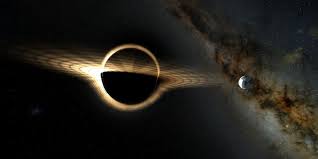Black Hole Simulation 24
What is Black Hole Simulation ?
Black holes are among the most fascinating and amazing objects in the enormous cosmos. These mysterious objects, which were formed when enormous stars collapsed due to gravity, have such a strong gravitational pull that not even light can break free from their hold. Black holes are elusive and mysterious, with their inner workings hidden from direct view, despite their fundamental significance in determining the structure of the universe.
On the other hand, attempts to discover the mysteries of these cosmic giants have been sparked by humanity’s voracious curiosity and technical skills.
Now enter NASA’s ground-breaking black hole simulation program, an ambitious project that aims to shed light on the universe’s darkest corners by combining state-of-the-art computer methods with theoretical astrophysics knowledge.

What is the Black Hole Simulation?
A virtual glimpse into the center of a black hole is provided by NASA scientists and researchers simulating the complicated dynamics of matter and energy swirling around these gravitational monsters using sophisticated algorithms and cutting-edge supercomputers.
With the use of these simulations, scientists can investigate a wide range of phenomena, including the creation and development of black holes, their interactions with surrounding matter, and the actual warping of spacetime. NASA’s simulations offer unparalleled insights into the characteristics and behavior of black holes on a variety of scales, ranging from stellar-mass black holes to supermassive ones that lurk at the centers of galaxies, by painstakingly simulating the complex interactions between gravitational fields, magnetic fields, and high-energy particles.
Follow our Digiknowledge.co.in page for the latest updates about technology, bikes, cars, sports, lifestyle, and many more.
Additionally, these simulations are a priceless resource for interpreting observational data collected by telescopes and other devices. This aids astronomers in identifying the telltale signs of black holes imbedded in cosmic phenomena like gravitational waves, relativistic jets, and accretion disks.
How does black hole simulation work?
NASA’s black hole simulations serve as beacons of scientific innovation and discovery as mankind expands into space, shedding light on the secrets of the universe’s most mysterious objects and changing our perception of them.
Through a fascinating voyage into the heart of a supermassive black hole, NASA’s visualization project gives viewers a first-hand look at the unsettling consequences of Einstein’s general theory of relativity. Two different possibilities of cosmic exploration are presented in these visuals, which were created by scientists at NASA’s Goddard Space Flight Center using the enormous computational capability of the Discover supercomputer.
In one scene, a camera is launched towards the black hole, and, just as in the story of an adventurous astronaut, it misses the event horizon and is launched back into space. The other, more dire option involves the camera vanishing past the event horizon and into the gravitational pull of the black hole, where it will ultimately perish.
These projections provide viewers with an opportunity to explore deeply into the bizarre world surrounding the black hole. They are available in a variety of formats, including captivating 360-degree videos and educational explainer videos. Reminiscent of the supermassive black hole at the center of our own Milky Way galaxy, the black hole itself is a focal point within the cosmic abyss, a gigantic object with a mass of 4.3 million suns.
A whirling disk of bright, hot gas surrounds the black hole to help with understanding and serves as a visual reference point as it descends.
The display is further enhanced by bright formations known as photon rings, which are made of light that has completed numerous orbits around the black hole. The setting is prepared for an amazing cosmic adventure against the backdrop of the starry sky as seen from Earth.
It was no easy task, though, to create these captivating visuals. The endeavor required the processing power of Discover’s 129,000 processors, yielding roughly 10 terabytes of data—half the estimated text content of the Library of Congress. The astounding completion of this enormous operation in just five days demonstrates the unmatched power of NASA’s supercomputing infrastructure in solving cosmic puzzles.
In fact, within a fraction of the time, what would take almost ten years to do on a standard laptop is completed, showcasing the limitless possibilities of technology in deciphering the mysteries of it all.
How do black holes form?
The earliest black holes originated from the high density fluctuations in the early universe and appeared soon after the Big Bang. Stellar black holes, on the other hand, are created when enormous stars collapse due to gravity. As their cores collapse inward, they explode like a supernova.
What are the different types of black holes?
Black holes can be classified as primordial, stellar-mass, intermediate-mass, or supermassive.
What is used to simulate conditions in black holes?
In order to research phenomena that cannot be directly witnessed, scientists utilize computer models to replicate the extreme circumstances surrounding black holes, such as their gravity. These simulations, which are run on cutting-edge supercomputers, are grounded in the general theory of relativity and observational data.
How can we simulate a black hole?
Superfluid helium and a spinning propeller were combined to construct black holes in the laboratory using a quantum simulator, a device that investigates the quantum characteristics of particles. Superfluid is frictionless, has zero viscosity, and when it is churned, it creates endlessly revolving vortices.




